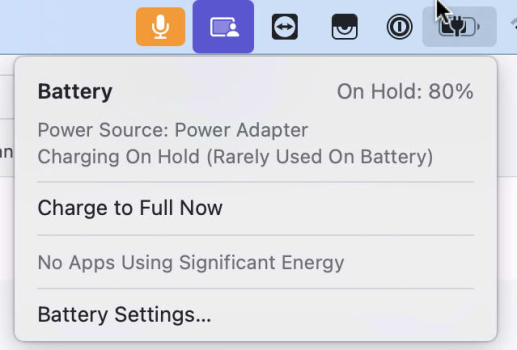I have found a new use for the sailing mode: set the upper charge limit to 80% and then set a 50% sailing range. Why?
well since we know that charging - discharging - charging - and so on - deteriorates the battery, even a 10% sailing range will eventually lead to charging - 80% - discharging - 70% - charging - 80% - and so on. i must state that this is already a massive improvement over not using sailing mode at all, because the battery hardly discharges in sailing mode while the charger is connected. If you hardly unplug the charger throughout the day, it can easily take two days before the unit drops back to 70% because the battery is essentially disconnected so for the battery it feels as if the unit has been powered down.
however, if you’re like me you unplug the unit now and then to take it to another desk, sit on the couch for a while, or bring it with you on the train. So in between there will be some discharge and one may reach a given 10% sailing mode range within a couple of hours, which will activate charging back to 80% Next time the charger is plugged in.
so in comes the 50% sailing mode range. i can plug in and unplug the charger anytime I want and still the unit won’t start a charging cycle until the battery is down to 30%. This way, I am massively reducing the number of charging cycles, much more than when using a 10% sailing mode range. With these settings, sometimes I get four days out of one 80% charge.
to take things even one step further, switch off WiFi before you go to sleep. wifi on enables the unit to keep syncing throughout the night and you may find your battery drops 5-15% during one night. With WiFi off, it can be a only 1-3%.
better yet, power down your MacBook for the night.
thats all for today 😀
 apphousekitchen.com
apphousekitchen.com
 apphousekitchen.com
apphousekitchen.com


